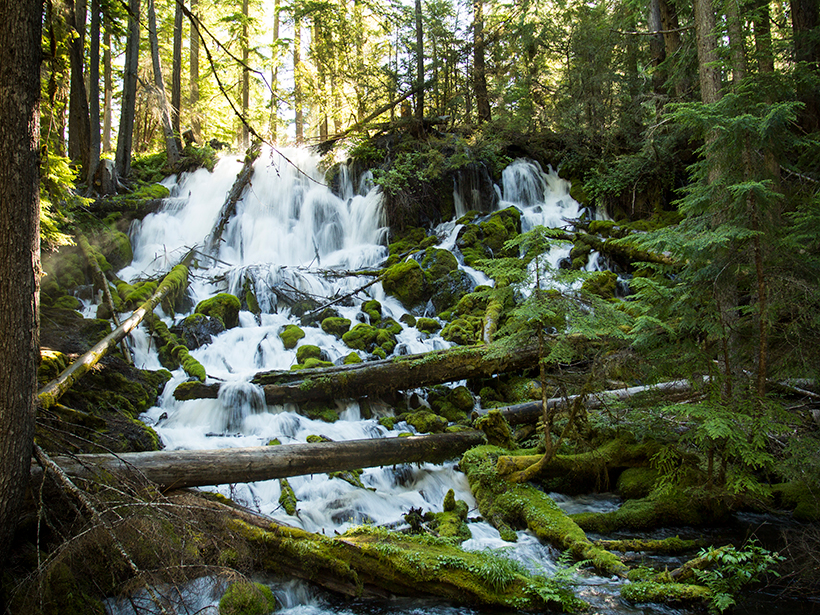Source: Water Resources Research
As average air temperatures rise, the temperatures of forested streams that provide key habitats for salmon and other cold-water organisms typically do as well, but the relationship isn’t necessarily straightforward. New research suggests these streams may warm even more in the future than some models have predicted.
Clarifying exactly how climatic warming affects stream temperatures is important for understanding and potentially managing negative ecosystem impacts. Previous research has suggested that empirical models relying purely on observed relationships between air and stream temperatures tend to underpredict future stream warming compared with computational models that incorporate physical processes.
To sort out the discrepancies between the different types of models, Leach and Moore drew on work they performed in the Malcolm Knapp Research Forest near Vancouver, British Columbia, Canada. They used numerous field measurements to build and calibrate a process-based model incorporating several key factors, such as tree canopy cover, snowmelt, and groundwater discharge. The model simulates daily streamflow and temperature for virtual streams that are representative of forested streams in maritime climates, such as those found in northwestern North America.
The researchers used their model to generate simulated streamflows and temperatures for a 51-year historic period as well as several future climate change scenarios, such as an increase in air temperature of 2°C. They ran the model for two elevation zones—one dominated by rain and the other with significant snowmelt contributions—and with four different values for the fraction of soil water that ends up discharging as groundwater into the stream.
The simulations revealed that stream temperatures may be up to twice as sensitive to climate change as predicted by observation-based models. The analysis suggests that empirical models do not adequately account for future effects of global warming on key processes, such as reductions in winter snow cover and reductions in plant shade. It also suggests that streams fed by groundwater may resist warming in the near term but will eventually warm as groundwater temperatures rise.
The findings highlight the importance of considering prior conditions when evaluating how sensitive cold-water streams are to climate change and, ultimately, how aquatic ecosystems will be affected. The authors call for a shift from purely empirical modeling methods to approaches that better account for key feedbacks that affect stream temperature sensitivity. (Water Resources Research, https://doi.org/10.1029/2018WR024236, 2019)
—Sarah Stanley, Freelance Writer
Citation:
Stanley, S. (2019), Forested streams may warm more than observations predict, Eos, 100, https://doi.org/10.1029/2019EO128089. Published on 18 July 2019.
Text © 2019. The authors. CC BY-NC-ND 3.0
Except where otherwise noted, images are subject to copyright. Any reuse without express permission from the copyright owner is prohibited.

